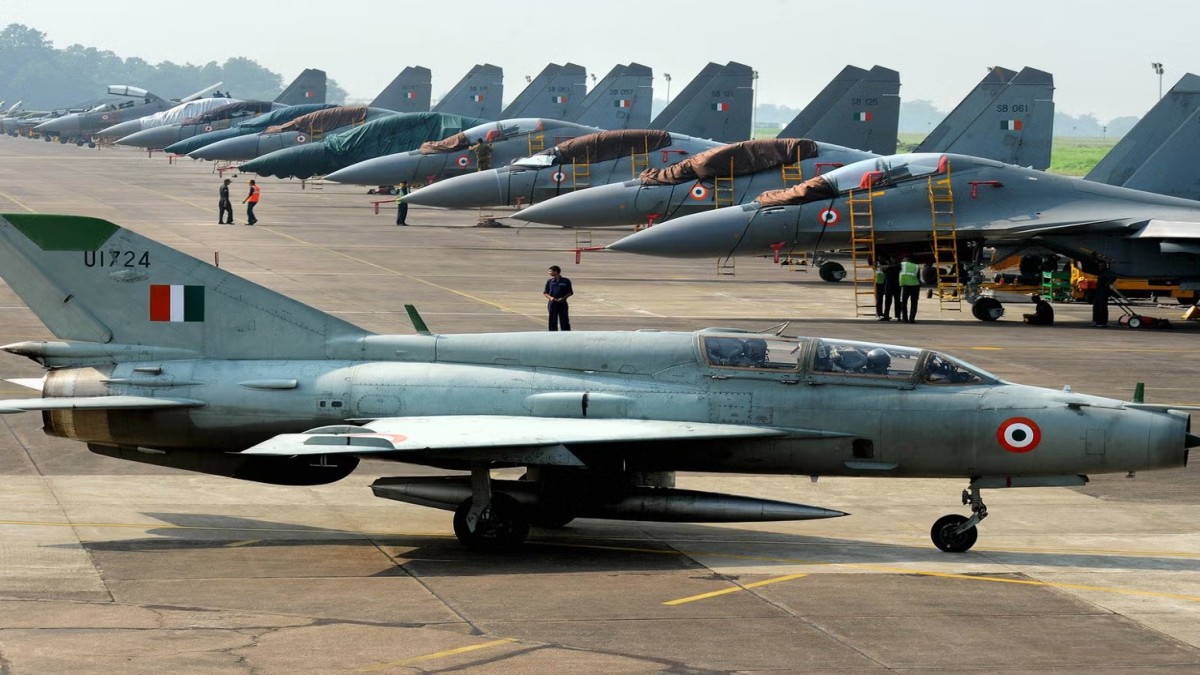India is phasing out its MiG fighter jets by September.
The fighter jets, which have been given the ignominious nickname of the ‘flying coffins’ for their propensity to crash and kill pilots, have been in service for decades.
India will replace the MiGs with its indigenously-developed Tejas Light Combat Aircraft (LCA).
But where does that leave India’s Air Force against China and Pakistan?
Let’s take a closer look:
Indian Air Force
The strength of Indian Air Force’s active squadrons is set to drop down to just 29 from October.
This would mean India is at its lowest number of squadrons since the 1960s.
While the squadron size can vary depending on the country, it typically ranges from 18 to 24 aircraft.
The Indian Air Force currently has 31 squadrons in service.
With the MiGs set to retire on September 19 at the Chandigarh Air Force Station, this will bring the number of India’s squadrons down to just 29.
According to assessments, the Indian Air Force requires 42 squadrons to be at its full strength.
India currently has 522 jets.
It needs to induct at least 40 fighter jets every year simply to maintain its strength.
Unless India keeps inducting new aircraft into its Air Force, its squadron strength will continue to dwindle as old models keep being phased out.
At the moment, that seems to be a tall task.
Impact Shorts
More ShortsIndia placed an order for 36 Rafale from France, but that hasn’t been enough to bolster the ranks of the IAF.
India currently has just two Tejas squadrons in service.
Meanwhile, an order it placed for 83 Tejas Mk-1A aircraft has been beset by delays and missed deadlines from Hindustan Aeronautics Limited (HAL).
Not a single craft has been inducted into service.
However, to be fair, this is due to General Electric, which is making F-404IN20 engines for the Tejas Mk-1A craft, has been unable to meet its deadline.
GE has said this is due to supply chain issues.
Another reason for the delay is that the Kaveri engine that was expected to power the LCA remains under development.
India is currently developing a 5th generation Advanced Medium Combat Aircraft.
However, this could take years if not a decade before being inducted.
Experts say a healthy mix of different aircraft is needed.
Aerospace and defence expert Pushan Das told The Telegraph Online, “As the IAF’s combat squadrons continue on its downward slide in numbers. It seems intuitive that India must consider a broader range of options better suited for its combat requirements. One potential option is acquiring an additional mix of technologically up-to-date Rafales and accelerating the production and induction of the indigenous Tejas with requisite enablers such as air refuelling capabilities and Airborne Early Warning and Control Systems (AEW&C), although there are certainly other options as well.”
The air forces of Pakistan and China
Pakistan has 25 squadrons in its air force with around 450 fighter jets.
Islamabad is also reportedly looking to expand and modernise the Pakistan Air Force (PAF).
There are also reports that it is looking to purchase a few dozen J-35 fighter jets from China in a bid to try to gain parity with Indian air superiority.
China, on the other hand, has a whopping 66 squadrons and a massive 1,200 fighter jets in its People’s Liberation Army Air Force (PLAAF).
At this rate, India will be completely outmatched when it comes to the sheer weight in numbers of both air forces.
China has already inducted two fifth-generation fighters into the ranks of its air force.
India’s Tejas LCA Mark-1A is at best a 4.5 generation fighter.
China is also locked in a race with the United States to develop a 6th generation fighter aircraft.
The US is building the F-47, while China is developing the J-36.
While the details of both remain closely-guarded, videos of the J-36 went viral on social media in China in April.
The US currently has the F-35 – which remains the most advanced fighter jet even built – as the mainstay of its air force.
Why it matters
India needs to be on its guard.
After all, it has fought multiple wars with both Pakistan and China.
The two neighbours, who have professed to be ‘iron brothers’ and ‘all-weather friends’, worked together during Operation Sindoor.
However, it must be noted that the quality of the Chinese-made equipment and aircraft used by Pakistan came under scrutiny due to its poor performance.
Still, at the end of the day, when it comes to aerial firepower, it remains a number’s game.
India will not want to find itself completely outnumbered in the sky in case a conflict breaks out.
And fighting a battle on two fronts would be far harder than a single-front conflict.
With inputs from agencies
)